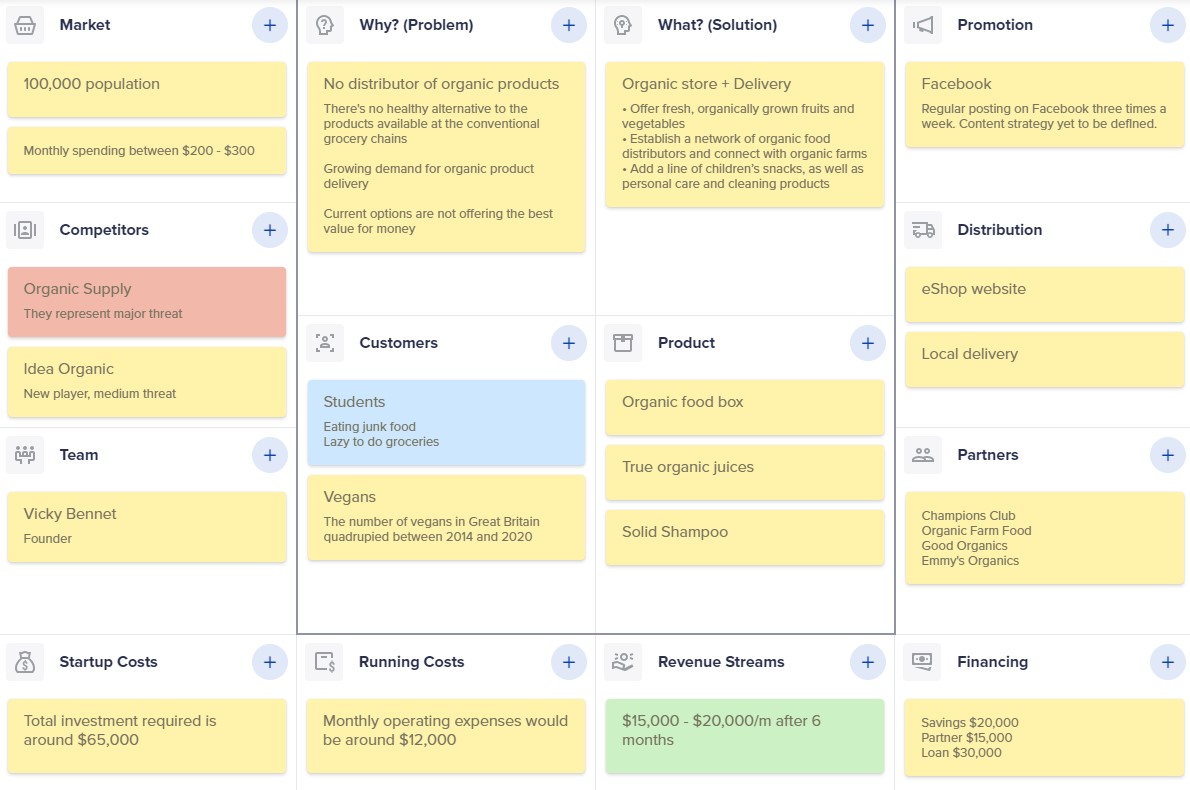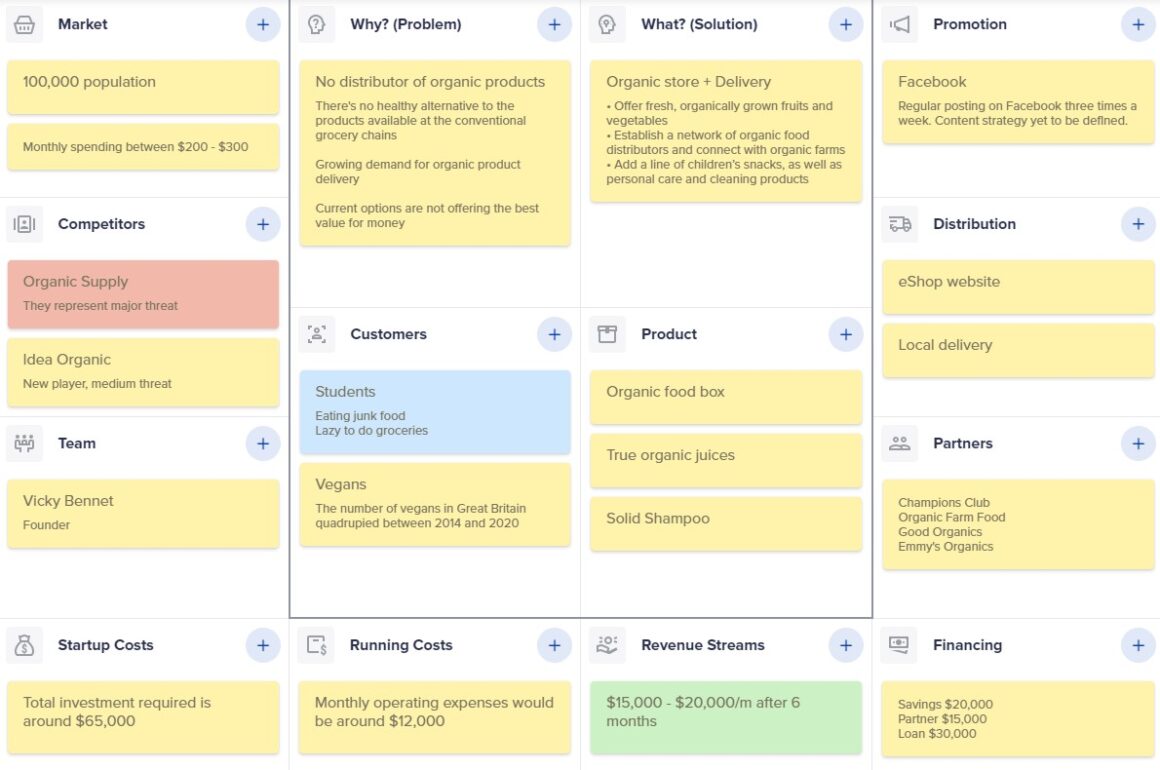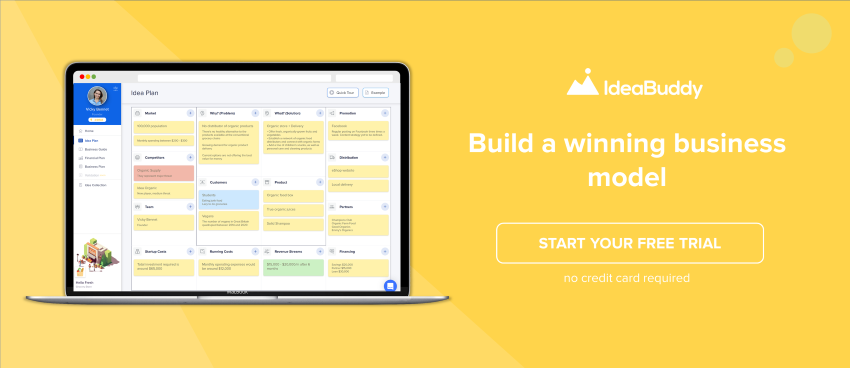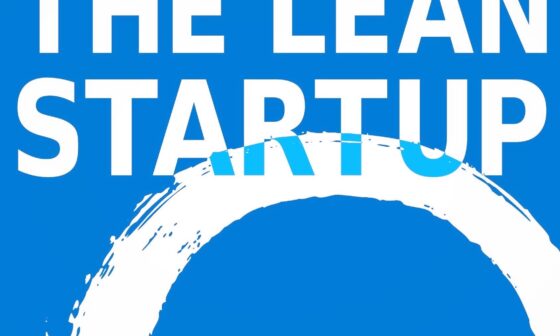Learning how to build a business model is an important step in each aspect of your business journey.
From pitching to investors to entering new markets or rolling out new products, your business model needs to tell a coherent story, where all elements of your business plan fit together.
So, in this post, we look at how to build a business model that strikes a balance between delivering value and making a profit.
Why a business model is so important
The business model is where your initial discovery efforts continue. Once you’ve researched the market, customers, and opportunities, you build a business model that fills that discovered gap and offers genuine value to the customer.
But to have a lasting business, you need to be constantly assessing whether there is coherence between what happens in the market and what your business model delivers to the customers.
For instance, when the pandemic hit, many brick-and-mortar restaurants and shops moved from a traditional business model to a hybrid model, offering takeout food or moving laterally to delivery of other types of goods.
Other firms clung to the existing model, only to find it impossible to do business and eventually had to close their shops.
So, the reason why you build a business model is to create attunement between your target audience and your offering, within market and industry constraints and possibilities. These conditions change fast, so you need to continuously check all parts of your business model for this fine-tuned connection.
One good framework that lets you do that is the lean product lifecycle. This framework focuses on continuous improvements and shipping to gradually improve the product/service and deliver the best value. Think of it as a three-step journey that consists of:
- business model ideation
- business model prototyping
- identifying assumptions
The final stage is the validation/testing phase as a bonus step, after you have created a valid business plan.
Let’s now go through each of the stages and look at the must-haves you need to identify after each stage and what to focus on for maximum value.
Business model for ideation
The business model ideation stage is about collecting input from the outside: market, competitors, industry, customers, and investors. To keep things neat, it’s best to use some of the business model tools available, such as the lean canvas or business model canvas.
There are different ways to go about business model ideation, but the most important bit of this stage is to create an early draft of your business model. Your task in this stage is to answer the question: How is the mechanism of your business going to work?
This means collecting information on several key aspects of your new business, such as partners, resources, customers, or channels.
Key partners
Building partnerships with other organizations, such as those that offer technology solutions, helps bring down risks and get access to capabilities and resources you might not have initially.
Key activities
These are the core activities of your business, whether it’s product building, problem solving, building a platform, or providing services such as consulting, teaching, or marketing.
Key resources
This is what makes your model work — people, finances, physical resources, and intellectual property.
Value propositions
This is the value you provide to the customer segments you want to focus on for the time being.
Customer relationships
How do you plan to work with your customers? Are you going to provide an automated service, with as little interaction as possible? Or are you in for the dedicated services of a personal assistant?
Channels
How will you reach your audience? How are you going to communicate with them? Think back to what your brand is like, but don’t spend too much time fine-tuning at this point. Leave refinement for later.
Customer segments
These are all the different groups of customers you have identified during your research. Chances are you will approach each differently, so this part forms the basis of your customer relationships, channels, and value propositions.
Cost structure
These are all the fixed and variable costs you will incur on your way to delivering value to customers. Initially, you may not have a precise estimate of the cost structure. So, it is fine to work with ballpark assumptions in the earliest stages.
Revenue streams
This is the part where you capture value back from customers. Will you use licensing, subscription fees, a freemium model, asset sales, usage-based sales, or something else?
Once you identify and phrase all this information, you should end up with something like this business model:

Now you have a bird’s eye view of your business, with all the foundation stones of a lasting business venture. But since it is difficult to narrow down this information, especially for first-time founders and startups in the early stage, your must-haves should include:
- Problem
- Solution
- Customers
- Product (the four blocks in the middle of the business model above).
Business model for prototyping
The key to getting a lasting and valid business model is to go wide and explore as many options as possible. Then you can narrow it all back to a business model that will really make your business work. So once you have a draft business model, you should start over and build the next one.
You can use the business model template from above as a prototyping tool. After you’ve created your initial business model, create dozens more. That’s a safe way to think through all the options in which you can deliver value to customers.
Imagine and walk through several different business models with your team. It is important not to skip prototyping as you can get trapped in the first model you thought of. This can lead to ignoring other viable options and missing out on the potential that could really take your business venture to the next level.
To get the most out of business model prototyping, you should gather small cross-functional teams and have each create their own business model. They can then present their ideas to the big group. In the end you will end up with many more business model ideas to use.
Once each group has its own model, play a game of ‘What-ifs’. How would each business model change based on a hypothetical scenario? For example ask yourself: What if…
- …there was a pandemic?
- …another bigger competitor entered your market?
- …an investor decided not to follow through with the investment?
- …you failed to acquire x customers in six months?
This is an important step in identifying bottlenecks and pitfalls early on, and getting a more realistic, data-driven estimate of how your business will perform in the short- and mid-term.
Identifying assumptions
If you followed the earlier steps, you should have hit several milestones in your business model building process by now:
- You have built several business models, identifying different customer segments and their pain points
- You have identified several different scenarios on how to act in case of market changes and events outside your control
In the third step, you expand on each of these ideas. The goal is to identify assumptions that you then need to test before you arrive at a working business model.
So, iterate through each of the business models you and your team have come up with. The goal is to find risky assumptions that can have a big impact on your business performance.
To do this, take a look at each segment of each business model. Then, assess whether the point is tested and there is evidence for your item. For example, if you say you plan to acquire 300 customers for your beta app, how did you arrive at that number? Has one of the competitors managed to do so? Or a fellow startup founder in a similar niche? Which data do you have to back up this idea?
Be ruthless here. The more you test and refine each of these items and plans, the higher the chances your business model will last.
Testing and validation
So, after this stage, your output should be:
- List of assumptions not tested and purely hypothetical
- List of evidence-based assumptions
- Graded list of all these assumptions, in order of degree of impact they have on the business
Once you identify the riskiest, high-impact assumptions, you proceed with testing. After you test them, you return to the business model and make changes if necessary, based on your findings. You then test the next assumption, then the one after it, and so on, until you build a business model that rests on tested assumptions.




